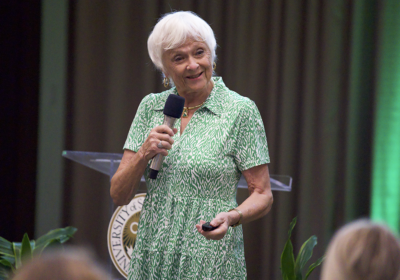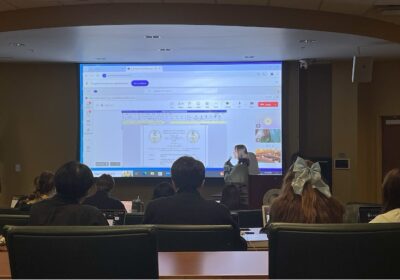Combining medicines may alleviate arthritis symptoms
According to the Center for Disease Control (CDC), nearly 67 million people, or 25 percent of adults 18 years and older, will have doctor-diagnosed arthritis by the year 2030.
However, a study conducted by USF researchers suggests that a combination of antibiotics may be the solution to curing a form of the disease caused by Chlamydia.
The study, which was published this month in the medical journal Arthritis and Rheumatism, was funded by a two-year grant from the National Institute of Health that amounts to about $390,000 – something that could bring in many more grants in the future, said Dr. John Carter, an associate professor and lead author of the study.
According to the CDC, there are many forms of arthritis. Reactive arthritis, the type the team of 11 researchers studied, is an autoimmune disorder, a condition that occurs when the immune system mistakenly attacks and destroys healthy body tissue that develops in response to an infection elsewhere in the body.
The most common triggers for this form of arthritis are Chlamydia trachomatis, a disease that is usually acquired through sexual contact, or Chlamydia pneumoniae, which triggers respiratory infection.
“Approximately 10 to 15 years ago we learned that Chlamydia travels from the site of infection to the blood to the joint tissue,” Carter said. “It is still viable in the tissues years after the initial infection.”
Although antibiotics have been used in the past to treat reactive arthritis, they have not proven to be effective, Carter said. However, his study suggests that an effective medication may be in sight.
“It is too soon to say reactive arthritis has been cured, but there is some suggestion that it is treating it to completion,” Carter said.
Carter said that previous studies were unsuccessful because they focused on using only one antibiotic at a time, something that his studies have proven will only make the Chlamydia stronger.
In the group’s 2004 study, the patients involved were only presumed to have Chlamydia reactive arthritis and were administered one or two antibiotics. While the study showed that patients who were given two antibiotics improved, Carter said it failed to prove that the arthritis they suffered from was caused by Chlamydia.
Based on these results, the team created a new study with a few changes – it used more than two antibiotics that attack Chlamydia and was only administered to patients who were proven to have Chlamydia.
In this new study, 42 patients that had either form of Chlamydia were randomly assigned to one of three treatment groups for six months and were followed for three months after the treatment. Two of the groups used two different combinations of antibiotics while one group, the placebo, received antibiotics that were designed to have no effect.
Like the first study, patients treated with the combination antibiotics showed a significant improvement – 22 percent were cured completely. None of the patients in the placebo group experienced remission.
Carter also said that when patients were tested for Chlamydia in their blood or joint tissue, a significant number of those treated by the combination antibiotics tested negative for the bacteria.
According to a release, the antibiotics used in the study were rifampin, doxycycline and azithromycin.







